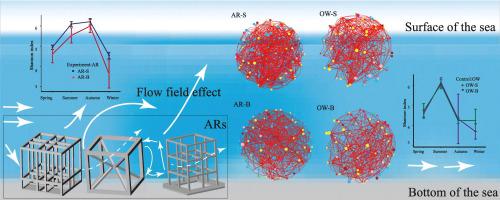Science of the Total Environment ( IF 9.8 ) Pub Date : 2020-06-27 , DOI: 10.1016/j.scitotenv.2020.140575 Wentao Zhu 1 , Chuanxin Qin 2 , Hongmei Ma 3 , Shigai Xi 3 , Tao Zuo 3 , Wanni Pan 1 , Chunhou Li 2

|
Artificial reefs (ARs) are widely used for biodiversity conservation and coastal habitat restoration. Although protists play an important ecological role in marine ecosystems, the response of the protist community to ARs is still poorly understood. In the current study, an Illumina sequencing analysis of 18S rDNA was performed, and the diversity, community structure, and co-occurrence networks of protists in the ARs and open sea area (OW) in Daya Bay were described. The results indicated that significant seasonal differences occur in the seawater protists between the surface and bottom of the ARs and OW. However, the protists in the ARs and OW had different seasonal variations. The ARs always affected the alpha diversity of marine protists in different seasons, while the surface and bottom OW sites had different seasonal effects. The ARs sites had different effects on the community composition of the surface and bottom seawater in different seasons relative to the OW sites. The linear discriminant analysis (LDA) effect size (LEfSe) method showed that 85 biomarkers mainly belonging to 11 taxa, including Bacillariophyta, Chlorophyta, and Dinophyceae, were affected by the ARs (P < 0.05, LDA > 2.0). The ARs played an important role in the seasonal changes in the protist community composition and had different effects on the dominant species of protists in the surface and bottom seawater. A redundancy analysis (RDA) significance test showed that the structure of the protist community in Daya Bay was mainly affected by environmental factors, such as seawater temperature, salinity and dissolved oxygen. Compared with the OW group, the surface and bottom layers of the ARs had more complex protist interactions or more niches. The ARs increased the degree of spatial heterogeneity, which may lead to significant niche differentiation, indicating that ARs as habitat factors affect the complexity and stability of the symbiotic network of protists. The results could provide basic data on the response of the protist community to the ARs in Daya Bay and a reference for assessments of the impact of ARs on the ecological environment.



























 京公网安备 11010802027423号
京公网安备 11010802027423号